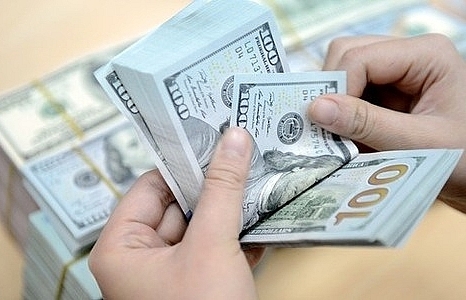Forex woes yet to be addressed
 |
| Many businesses are still struggling to source hard currencies to fund imports |
Two weeks ago, the State Bank stressed that currency depreciation would pave the way for a more flexible management mechanism to narrow the official and unofficial rate between the .
In all working days of last week, the central bank actually applied a “new flexible management” to intervene again on the forex market via gradually lowering the reference exchange rate from VND20,713 to VND20,683 per dollar.
“It is a new development from the authority though its move did not have any substantial impact on the real market. It is more like a signal than an action,” said a Vietcombank executive.
From November 2009 to two weeks ago, the reference rate was maintained at VND18,932 per dollar.
As local banks are allowed to trade the dollar only 1 per cent either side of the reference rate, the maximum rate is set at VND20,900 per dollar. However, by the end of last week, on the unofficial market, the VND/USD exchange rate traded between VND21,800-22,000, 5 per cent higher than the official market rate.
“The trend is the gap between the official and unofficial exchange rates widening day-by-day. I think that the reference rate adjustment is not enough,” said a Vietcombank executive.
A Barclays Capital’s economist Prakriti Sofat said the size of the move suggested that another near-term depreciation was unlikely. “However, for sentiment for the currency to stabilise, we feel the central bank needs to contain inflation expectations and support the forex market. We believe credit growth, which was nearly 30 per cent last year [above the target of 25 per cent] and money supply growth of 25.3 per cent [above target of 23 per cent] were too high,” said Sofat.
The State Bank set the 2011 growth targets for credit and money supply at 23 and 21-24 per cent, respectively.
Two weeks ago, the State Bank announced a 9.3 per cent devaluation of the dong. The authority set the VND/USD reference rate from February 11 at VND20,683 compared with VND18,932 on the previous day. It also narrowed the trading band from 3 per cent on either side of the reference rate to 1 per cent. In a similar move, it also weakened the midpoint by 5.44 per cent in November 2009, when it also narrowed the trading band to 3 from 5 per cent either side of the reference rate.
The difference between the two exchange rates led to difficulties for foreign funds and companies engaged in international trading to exchange currencies. They normally had to pay what has become known as the “Vietnam tax”, or the fact that when selling greenbacks, you can only do so at the official rate of VND19,500 per dollar and when buying, you do so at the effective rate of VND20,800 per dollar or VND19,500 plus roughly 7 per cent of bank fees.
What the stars mean:
★ Poor ★ ★ Promising ★★★ Good ★★★★ Very good ★★★★★ Exceptional
 Tag:
Tag:
Related Contents
Latest News
More News
- The promotion of ESG via banking (November 21, 2024 | 09:32)
- Standard Chartered committed to Vietnam’s financial success (November 21, 2024 | 09:24)
- Full ESG adoption the priority for Agribank (November 21, 2024 | 09:07)
- Banks entice youth with tech advances (November 21, 2024 | 08:00)
- Banks shaping the future as business advisors (November 20, 2024 | 21:00)
- ESG represents a shift towards sustainability for banks (November 20, 2024 | 13:00)
- GGGI supports Vietcombank’s debut of $80 million green bonds (November 20, 2024 | 11:20)
- SHB and the ESG journey: creating social value in every step (November 19, 2024 | 15:00)
- Banking sector contributes to ESG, green growth, and sustainable development (November 19, 2024 | 14:42)
- ESG implementation in banking: from awareness to action (November 19, 2024 | 12:08)


















 Mobile Version
Mobile Version